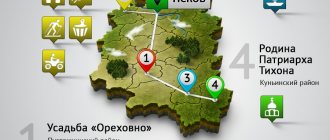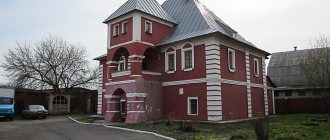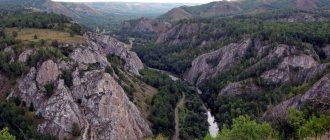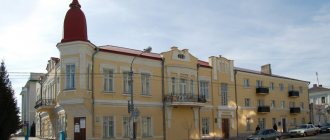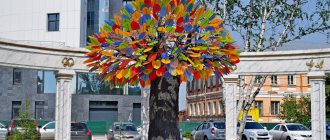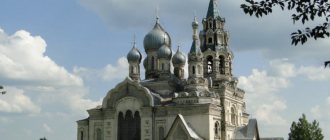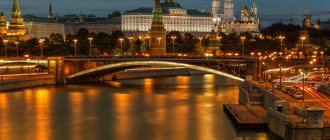Voronezh is not the first thing that comes to mind when we think about where to spend our holidays. Nevertheless, its surroundings represent a rather unique area for central Russia. Here, many cave temples are concentrated in a compact area, the surface of the earth is cut by winding canyons and snow-white chalk quarries, and in the south of the region there is even its own desert. The region is not deprived of objects of historical and cultural heritage.
In the Voronezh region, you can spend an active weekend or go here for a whole week to immerse yourself in exploring the local beauties, either with a tent or staying in one of the hotels in the capital of the region.
Much of the local attractions are outdoors, making it an ideal family outing. After all, among forests, fields and caves, children are never bored, and besides, you can touch everything with your own hands. And parents don’t need to worry that a noisy family will disturb those around them - there is enough space for everyone.
Aseev Estate
In Tambov on the street. Embankment, 22 there is a unique museum complex “Aseev Estate”. The first owner of the estate was industrialist Mikhail Aseev. At the beginning of the 20th century, he bought a plot of land on the banks of the Tsna River with an ancient park. By 1905, Aseev built a palace here according to the design of the Moscow architect, master of Art Nouveau Lev Kekushev. The architectural style of the estate has features of classicism, baroque, and modernism. During the Soviet years, the estate had a variety of institutions. By 2014, the estate was restored. The interiors inside the building are partly authentic, partly recreated. The estate museum can be visited from Tuesday to Sunday from 10.00 to 18.00; on Thursdays the museum has a “long” day and is open from 13.00 to 21:00.
Aseev estate in Tambov
Near Tambov in the city of Rasskazovo on Sovkhoznaya, 1 you can also see the mansion house of Vasily Tikhanovich Aseev. Opening hours: Sat and Sun from 10.00 to 17.00. Ticket 150 rub.
The village of Anna and its attractions
The first mention of the village of Anna dates back to the beginning of the 18th century.
- The main attraction of the village is the active Church of the Nativity of Christ . It was built at the turn of the 19th and 20th centuries at the expense of the princely Baryatinsky couple. A building of unique beauty, made in the Byzantine style.
- In the village you can visit the local history museum , as well as memorable places: the Walk of Fame and a memorial in memory of the residents of the village who died in the Second World War, a monument to internationalist soldiers, a monument to the Mother.
Attractions in the vicinity of the town of Anna:
- The Troshchinsky-Schlichting estate in the village of Verkhnyaya Tishanka is a complex of buildings from the 18th century - a monument of history and architecture. Near the building itself there are: a water tower, a church, a mill, a hospital, an outbuilding, and a park.
- Lake Babie is a small round reservoir with clean fresh water - a natural monument.
Estate of the Troshchinsky-Schlichtings
Prokhorovka
Are you sad that you won’t be able to take photos with balloons from Cappadocia in Turkey this year? Or don’t know where you can go to a beautiful place in the Voronezh region? Then go to the village of Prokhorovka, which is located near Belgorod. On the days from September 4 to 7, the Belogorya Sky Festival will be held here. There will be demonstrations of airplanes, helicopters, paramotors, and the simultaneous takeoff of hot air balloons. Plus Prokhorovka itself is an iconic place. Here is the Prokhorovskoye Field museum-reserve, which was founded in honor of the tank battle on July 12, 1943. We wrote more about the museum here. Coordinates 51.019760, 36.675824.
What to see in the Voronezh region in winter
- Ski complex "Dongor" with several convenient slopes and lifts.
- Belogorye and Divnogorye - enjoy the amazing landscapes of the surrounding area, walk through caves, admire underground temples.
- Sights of one of the large cities of the Voronezh region - Borisoglebsk, Rossoshi or Lisok - the concentration of interesting places to visit here is much greater than in small towns, and you will not lose much time moving.
Uthark Castle
This medieval castle in Belgorod is a remake; it was started to be built by a local resident and his family in the 2000s near the beach in Sosnovka. But despite its young age, the castle looks impressive. Here you can take a walk, have a photo shoot and celebrate some kind of celebration. The castle is located at st. Peschanaya, 33. Opening hours: daily from 10.00 to 18.00. Tel..
Sights of the village of Rudni
- Local history museum;
- House-Museum of M. A. Egorov , who planted the USSR flag over the captured Reichstag building in Berlin;
- the Katyusha memorial on the outskirts of the village;
- Memorial "Grieving Mother" at the burial site of those killed in the Second World War.
Memorial "Katyusha"
Lev Tolstoy village
An interesting village in the Lipetsk region with many attractions. You can see water towers, a funny monument to a steam locomotive, and the more than century-old Trinity Church, which houses a museum of Orthodoxy. And don’t forget to check out the Memorial Museum in memory of L.N. Tolstoy "Astapovo". It is located in the house of the head of the Astapovo station, I. I. Ozolin, where, after being ill for seven days, Tolstoy died on November 7, 1910. Later in 1918, the Astapovo station was renamed Lev Tolstoy. Memorial Museum in Memory of L.N. Tolstoy "Astapovo" is open from Tue to Sun from 10.00 to 17.00. Ticket 60 rub. Museum address: Lev Tolstoy village, st. Privokzalnaya, 12.
Sights of Bobrov
- The Walk of Fame and the Museum of Military Equipment in the city's Central Park - here you can see military equipment that took a direct part in the battles.
- On the territory of the city you can see several monuments to those who died in the Second World War : a mass grave, a War monument, a stele for the 70th anniversary of the Victory, and an Airplane memorial.
- The city museum of local lore is located in the historical building of the store of the local merchant Miroshnikov. The museum offers tourists an interesting collection of exhibits on the history of the city, as well as several dioramas of natural attractions of Bobrov and its environs.
- The architectural attractions of the city also include the city government building , several administrative and residential buildings built in the late 19th – early 20th centuries.
- The central one of the Bobrov churches is the Church of the Assumption of the Blessed Virgin Mary , built in the mid-19th century, and is the only one of the three churches in the city that survived in the last century. The church is famous for the three miraculous icons kept here - the Mother of God, the Angel of God and the Matrona of Moscow.
- One of the central attractions of the Bobrovsky district is the Khrenovsky stud farm, created by Count Orlov-Chesmansky. The plant has a long and rich history and is famous, first of all, for the Oryol trotter breed, which is still bred here. The history of the stud farm is recreated by a large exhibition of the museum created there in the mid-twentieth century.
- The Orthodox Church of St. Mitrofan of Voronezh was built in Khrenov more than 100 years ago (1912), but is well preserved and has recently been restored.
Walk of Fame
Belogorye
The settlement of Belogorye in the Podgorensky district has been known since the end of the 17th century. Near the village there are stunning views of the Don and the chalk mountains. And not far from the village on the Kirpichi farm (Alexandra Nevsky St., 1) there is the Resurrection Belogorsky Monastery, which was founded in 1796. The monastery is known for its cave temples. Belogorye coordinates: 50.493072, 40.003076.
In this collection, we told you about the most beautiful places and attractions of the city of Voronezh and Voronezh, as well as neighboring areas for outdoor recreation. Travel with pleasure!
Sights of Ramoni
- The Palace of Princess Oldenburg was built in the second half of the 19th century. Take a tour of the castle grounds, go to the “Bridge of Love” and visit the ruins of the Oldenburg sugar factory.
- Not far from the palace there is another historical estate - Olgino , which belonged to O. Romanova, sister of Nicholas II. Now the estate buildings are empty, but walking around the territory is not prohibited.
- In Ramoni, it is also worth visiting the local ceramics museum . The museum is small, but the exhibits are quite interesting and belong to different eras - from modern crafts to archaeological finds of pottery from the 3rd century BC.
- In the vicinity of Ramon (Novozhivotinnoye village), the Venevitinov estate, built in the 18th century, . The estate has survived to this day in excellent architectural condition - now there is a museum of noble life - a branch of the Voronezh Literary Museum.
- The Krivoborye tract near the village of the same name in the Ramonsky district. It is a winding bed of the local Don River, and above it on one side is a picturesque steep bank 50 m high. There are great views here and you can also do some good fishing or relax on the clean sandy beach.
Palace of Princess Oldenburg
Beaver Sanctuary
Just an hour's drive from Voronezh there is a unique biosphere reserve where you can spend the whole day in nature, see live beavers and learn a lot of interesting things.
In the beaver reserve you can see:
- beaver garden;
- beaver nursery;
- interactive museum;
- cozy cafe;
- pier with boats;
- children's playground.
It is very cozy here and everything is conducive to communicating with nature.
An excellent road leads from Voronezh towards the beaver reserve. Along the M4 highway until the turn to Rostov or along the Tambov highway until the turn to Orlovo. There you will see signs to the reserve.
Landscape ethno-park on the Loma farm
In the far reaches of the Voronezh region there is the village of Loma. Lomovsky Natural Park is located here. Here you can see nature in all its beauty.
You can expect:
- beaver dams;
- suspension bridge over the river;
- an apiary with wild bees;
- floating house on the lake;
- earthen bath;
- working mill;
- creamery.
The village of Loma is located 240 km from Voronezh. You can get to the farm along the M4 highway like this: turn onto Buturlinovka, go to the regional center of Vorobyovka, from there another 27 km through the village of Muzhiche and the village of Vysokoye to the landscape park.
Having visited many interesting corners of the Voronezh region, you will see with your own eyes the beauty of nature and get acquainted with the culture, way of life and history of our country.
Information from RIA Voronezh
It was decided to divide the Central Black Earth Region (CChO) in 1934, after collectivization. The famine of the early 1930s contributed to the establishment of the Soviet model of governance; the authorities no longer feared the fragmentation of the country into small administrative units. According to historian Pavel Zagorovsky, the liquidation of the gigantic Central Black Ops Organization made it possible to create new governing bodies and reshuffle local functionaries so that none of them could become too entrenched in power.
At first, the Central Black Sea Region was divided into Kursk and Voronezh regions. In 1937, the Tambov region left the Voronezh region, and five more districts were transferred to the Oryol region, which, in turn, left the Kursk region. In 1954, the Lipetsk and Belgorod regions were separated, and two new ones also emerged: Kamensk and Balashov. At the same time, the Kantemirovsky and Bogucharsky districts were transferred to the Kamensk region, and the Borisoglebsky, Gribanovsky, Ternovsky, and Novokhopersky districts were transferred to the Balashovskaya region.
In 1957, the Balashov region was liquidated, the Voronezh region acquired modern borders.
Reason seven - shipbuilding
Peter the Great chose Voronezh as a springboard for the construction of a navy and the capture of the Turkish fortress of Azov. Voronezh craftsmen at that time had 100 years of experience in building river vessels, and the navigable Voronezh River flowed into the Don, which gave access to Azov. The king personally participated in the construction work. The first battleship "Goto Predestination" was created in Voronezh. Now on Admiralty Square there is a smaller copy of it - a museum ship of the same name.
The first reason is scientific.
The names of famous scientists and inventors are associated with the region. Thanks to the traveler and zoologist Nikolai Severtsov, who was born in Bobrovsky district in 1827, traces of ancient glaciers, oil outcrops, deposits of coal, granite, jasper were found in different places on the planet, and gold mines were discovered. A peak in the Pamir-Alai mountain system and a glacier in the Pamirs were named in honor of Severtsov. Peasant Daniil Bokarev from Alekseevskaya Sloboda, Voronezh province, invented a method for extracting oil from sunflowers, and former naval lieutenant Fyodor Kolyvanov created the prototype of a modern bathyscaphe. In addition, natives of the Voronezh region invented hot rollers, one of the first versions of a can opener, a device for safely removing ticks, and a laser. Read more about these and other inventions here.
Reason five – sports
Already in 1875, a yacht club appeared in Voronezh, which became the main center of sports in the city. A cyclists' society, an athletic and chess club, and a wrestling club worked under him. The yacht club held speed skating, figure skating and athletics competitions. Future Olympic champion Nikolai Panin-Kolomenkin began training there.
Anatoly Protopopov was born in the Pavlovsky district of the Voronezh region, who in 1948, at the USSR weight-lifting championship among sailors, lifted a two-pound weight with one hand 1002 times. This record has not been repeated by anyone in the 20th century.
Among the natives of the Voronezh region are successful modern athletes: diver Dmitry Sautin, track and field athlete Yuri Dumchev, gymnasts Nikolai Kryukov, Tatyana Tuzhikova, Angelina Yushkova, Angelina Melnikova, Victoria Komova. In 2013, Voronezh rock climber Evgenia Malamid entered the top three strongest in the world.

